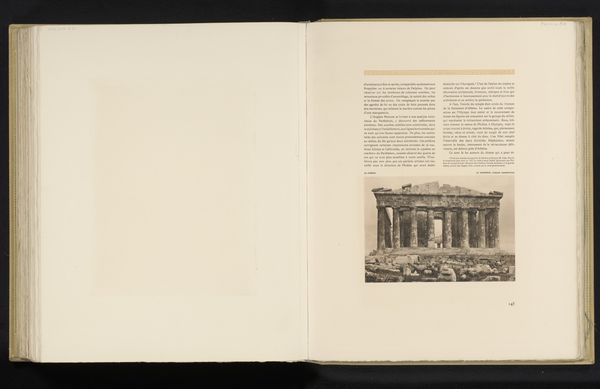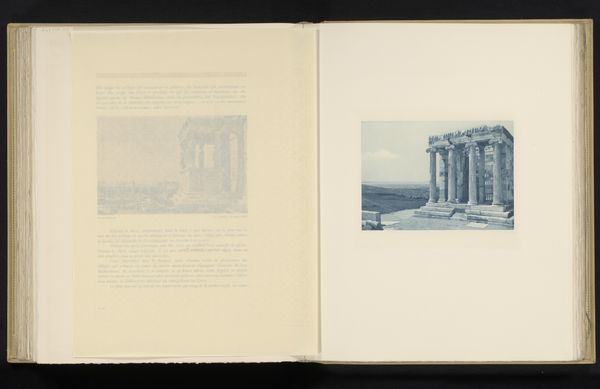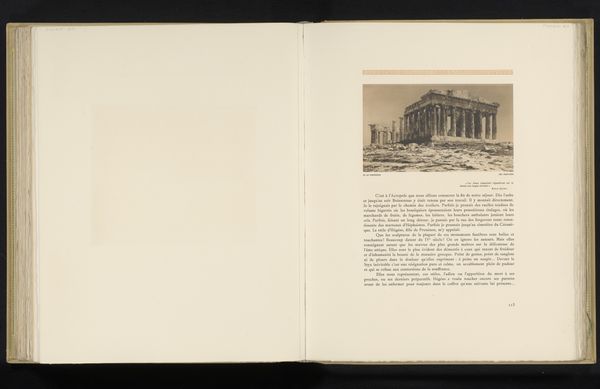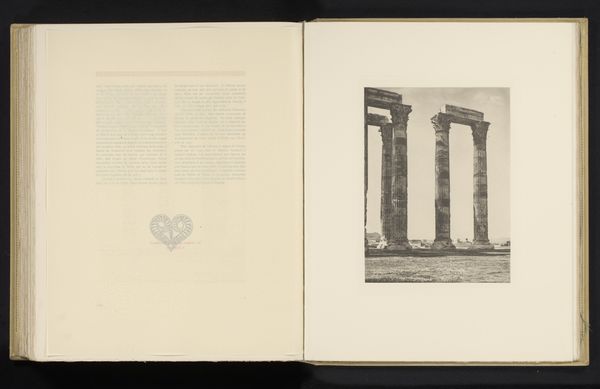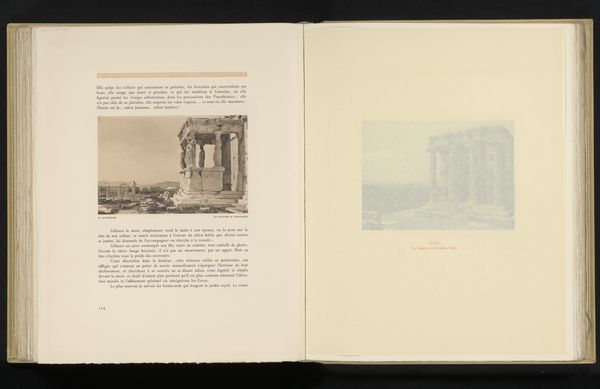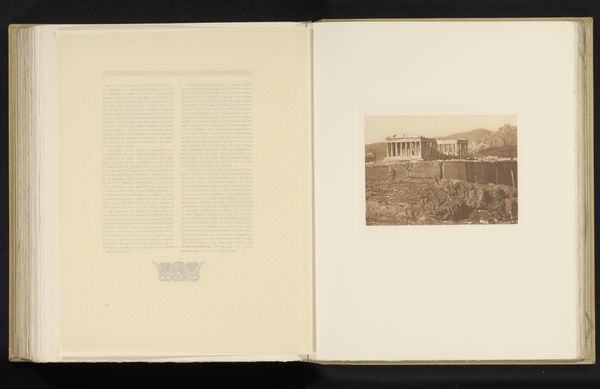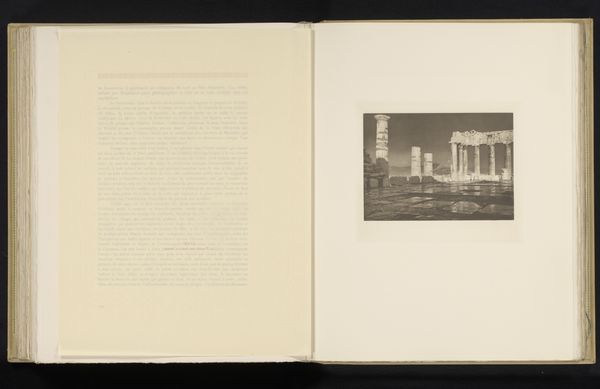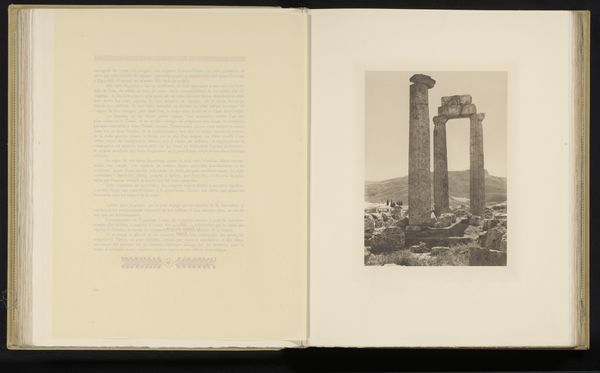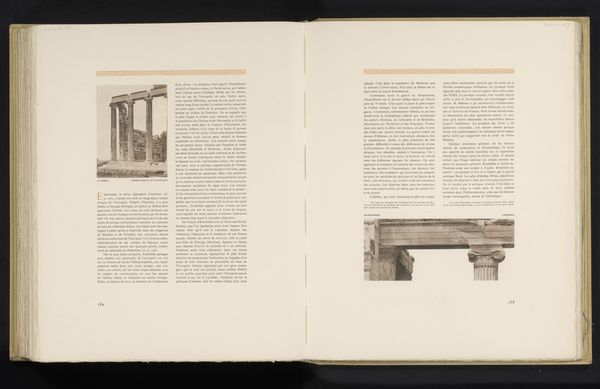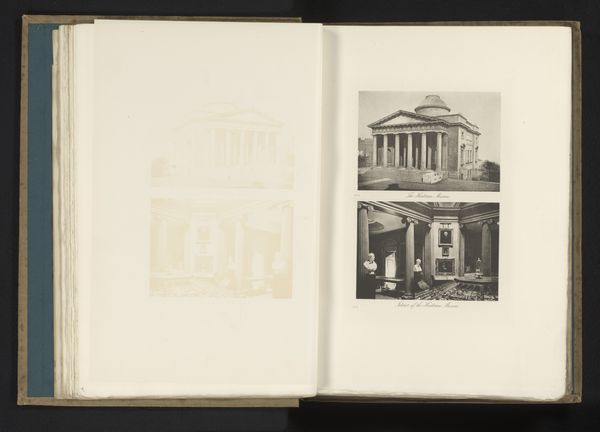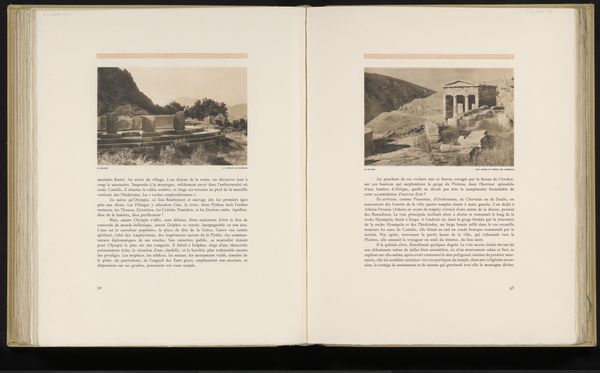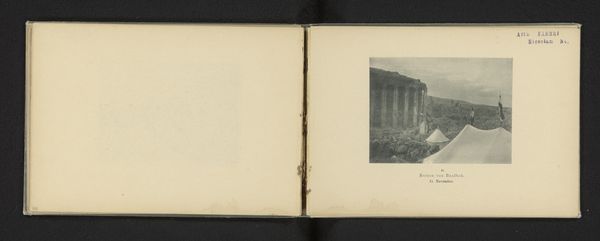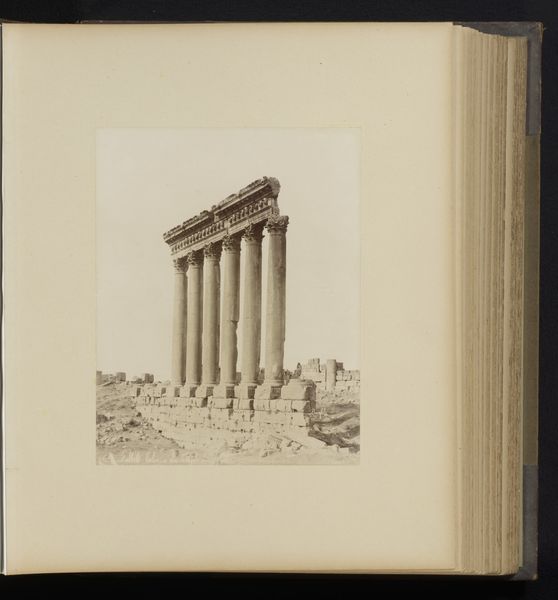
print, paper, photography, albumen-print, architecture
#
aged paper
#
paperlike
# print
#
greek-and-roman-art
#
landscape
#
paper
#
photography
#
ancient-mediterranean
#
thick font
#
publication mockup
#
cityscape
#
script guideline
#
classical type
#
paper medium
#
thin font
#
albumen-print
#
architecture
#
realism
#
historical font
#
publication design
Dimensions: height 258 mm, width 214 mm
Copyright: Rijks Museum: Open Domain
Curator: What a striking image, this view of the Parthenon, captured by Frédéric Boissonnas sometime before 1910. It’s an albumen print, displayed here within what appears to be a larger publication. Editor: Wow, the scale of the Parthenon just leaps out, doesn't it? Even in this aged, sepia tone, it still has this imposing presence, this whisper of grandeur and time. It reminds me of a faded postcard, something unearthed from a dusty attic. Curator: Precisely! That “faded postcard” effect is so potent. Boissonnas, through his lens, offers us not just a photograph, but a meditation on cultural memory. The Parthenon, even in ruin, embodies so much of what we understand about classical ideals, about democracy, philosophy, art. Its image, reproduced and circulated, became a powerful symbol. Editor: You know, it makes you think about what that symbol even *means* now, after centuries of…well, everything. All the layers of history piled onto those columns. Is it about timeless beauty, or a ruinous reminder of empires? Curator: Both, I think. Its enduring power lies in its polysemy—its ability to hold multiple, sometimes contradictory meanings. This photograph freezes a specific moment in the building's decay, a stage in its ongoing transformation through time and interpretation. Boissonnas was particularly taken by historical landscapes, and Greece was, for him, a site of immense power and association. Editor: It is like a phantom limb almost, isn't it? Still feels vital, throbbing with import, yet forever changed and out of reach. Maybe that’s why the Parthenon continues to capture us, across all these years and photographs: it makes us contemplate the stories we inherit and what pieces we choose to keep. Curator: Beautifully put! Seeing it framed this way, it calls up a lot of consideration for how societies visually represent ideas. Editor: And how much richer a single captured moment can get once we actually take a closer look.
Comments
No comments
Be the first to comment and join the conversation on the ultimate creative platform.
